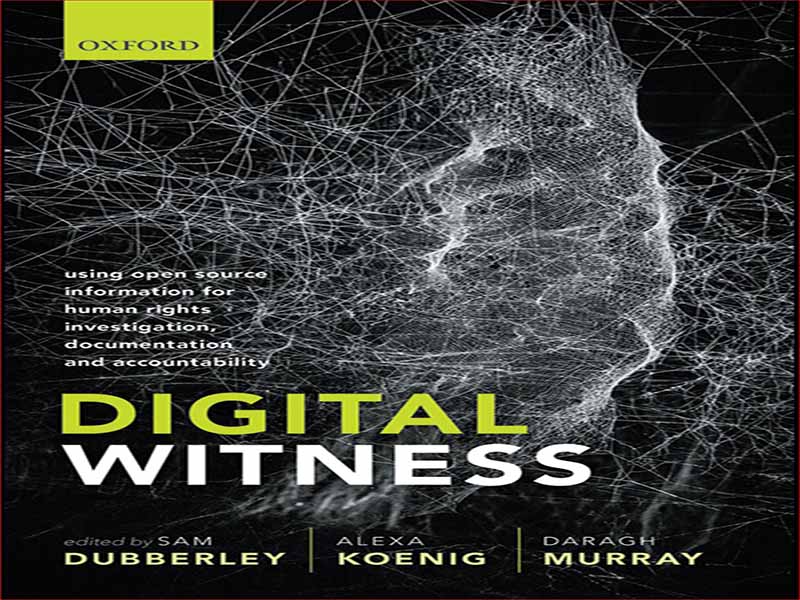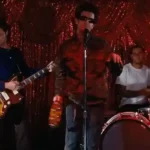- عنوان کتاب: Digital Witness – Using Open Source Information for Human Rights Investigation, Documentation, and Accountability
- نویسنده: SAM DUBBERLEY
- حوزه: فارنزیک دیجیتال
- سال انتشار: 2023
- تعداد صفحه: 385
- زبان اصلی: انگلیسی
- نوع فایل: pdf
- حجم فایل: 54.3 مگابایت
در 24 مه 1844، ساموئل اف. اختراع مورس پیامدهای بزرگی داشت که پیش بینی نشده بود. یکی از آنها تأثیر عمیقی بر حقوق بشر داشت. انتقال سریع اطلاعات که توسط تلگراف امکان پذیر شد به روزنامه های عصر مورس اجازه داد تا حرفه جدیدی ابداع کنند: خبرنگار جنگ. قبل از تلگراف، اطلاعات مربوط به آنچه در درگیریهای مسلحانه رخ داد، اغلب شامل گزارشهایی بود که مدتها بعد توسط فرماندهان نظامی نوشته میشد و از اعمال باشکوه خود تمجید میکردند. این موارد عموماً شامل مواردی مانند بدرفتاری با زندانیان نمی شود. بی توجهی به مجروحان؛ تجاوز به زنان در جوامع اشغال شده به عنوان بخشی از غنایم جنگی؛ و حملات بدون تبعیض که غیر جنگجویان را قربانی کرد. همه چیز با اختراع خبرنگاران جنگ تغییر کرد. آنها با استفاده از تلگراف، گزارشهای روزانهای از حماقتها و ظلمهای جنگ ارائه میکردند و اغلب به موضوعاتی میپرداختند که قبلاً گزارش نشده بود. اولین درگیری مسلحانه ای که توسط خبرنگاران جنگ با استفاده از تلگراف پوشش داده شد، جنگ کریمه 1854-1856 بود. در آنجا، خبرنگار تایمز لندن، ویلیام هاوارد راسل، خود را متمایز کرد. او در مورد حمله احمقانه و فاجعه آمیز تیپ نور «به دره مرگ» نوشت. و گزارش او در مورد عدم مراقبت از سربازان مجروح، الهام بخش فلورانس نایتینگل و گروهی از پرستاران شد تا به سمت کریمه حرکت کنند. گزارش راسل به ایجاد آگاهی عمومی در مورد جنایات جنگی کمک کرد، که به نوبه خود هانری دونانت، تاجر سوئیسی را قادر ساخت تا چند سال بعد، در سال 1864، برای تصویب اولین کنوانسیون ژنو از حمایت خود برخوردار شود. تلگراف بار دیگر در پوشش خبرنگاری جنگ از درگیری خونین دیگری در همان زمان، یعنی جنگ داخلی در ایالات متحده، نقش داشت. جنگ داخلی همچنین اولین درگیری مسلحانه بود که یک نوآوری تکنولوژیک دیگر، عکاسی، نقش مهمی در آن ایفا کرد. روزنامه های آن دوران هنوز قادر به انتشار عکس نبودند، اما تصاویر گرفته شده توسط متیو بردی و سایر عکاسان آن دوران به طور گسترده تکثیر و به نمایش گذاشته شد و به بینندگان درک واقعی تری از آنچه در درگیری های مسلحانه رخ داده بود نسبت به قبل می داد. این عکسها، همراه با گزارشهای گسترده خبرنگار جنگ، زمینهای را ایجاد کرد که در آن فرانسیس لیبر، پروفسور آلمانی الاصل حقوق دانشگاه کلمبیا با مخاطبینی در دولت پرزیدنت آبراهام لینکلن، کد رفتاری را برای نیروهای اتحادیه تهیه کرد. قانون لیبر 1863، متشکل از 157 ماده، اولین تلاش جامع برای تدوین هنجارهای رفتار جنگی بود. این مبنای بسیاری از قوانین، که اکنون به عنوان حقوق بشردوستانه بینالمللی شناخته میشود، شد که جنبش حقوق بشر معاصر برای حمایت از حقوق بشر در چارچوب درگیریهای مسلحانه به آن تکیه میکند. اولین تجربه من در استفاده از فناوری ارتباطات برای حمایت از حقوق، بیش از نیم قرن پیش اتفاق افتاد. در نیمه دوم دهه 1960، زمانی که من برای اتحادیه آزادی های مدنی آمریکا (ACLU) کار می کردم، بیشتر کارهای ما شامل تلاش هایی برای محافظت از حقوق مخالفان جنگ در ویتنام بود. در شهر نیویورک، مانند بسیاری از نقاط دیگر، تظاهرات خیابانی علیه جنگ اغلب با تعداد زیادی دستگیری همراه بود. پلیس در دادگاه شهادت میدهد که تظاهرکنندگان به شیوهای بینظم یا خشونتآمیز رفتار کردهاند و بر اساس آن شهادت، تظاهرکنندگان به طور معمول به جنایت محکوم میشوند. بسیاری به زندان فرستاده شدند. تنها راهی که میتوانستیم از تظاهرکنندگان با موفقیت دفاع کنیم، این بود که نشان دهیم آنها رفتاری مسالمتآمیز داشتهاند. هنگامی که تظاهرات برگزار شد، ما ناظرانی را با نشانهای بزرگ که خود را ناظر ACLU معرفی میکردند به محل اعزام کردیم. همانطور که انتظار داشتیم، پلیس در حال دستگیری تعداد زیادی از مخالفان جنگ بود که رفتاری کاملاً منظم و قانونی داشتند. ناظران ما متوجه چیز دیگری شدند. هنگامی که پلیس دستگیر شد و دستگیر شدگان را در واگن های پلیس قرار داد، افسران دستگیر کننده بلافاصله برای دستگیری های بیشتر رفتند. بعداً وقتی برای دفاع از تظاهرکنندگان به دادگاه رفتیم، افسران پلیس دیگری آمدند که ادعا میکردند افسران دستگیرکننده هستند و درباره رفتار بینظم بازداشتشدگانی که ادعا میکردند شاهد بودهاند شهادت میدهند. برای ما معلوم بود که شهادت پلیس هیچ ارتباطی با رفتار واقعی بازداشت شدگان ندارد. به گونه ای ساخته شده بود که محکومیت ها را تضمین کند.
On 24 May 1844, Samuel F B Morse sent his famous message, ‘What hath God wrought?’ by telegraph from Washington to Baltimore. Morse’s invention had great consequences that were not foreseen. One of them was a profound impact on human rights. The rapid transmission of information made possible by the telegraph permitted the newspapers of Morse’s era to invent a new profession: war correspondent. Before the telegraph, information about what transpired in armed conflicts often consisted of self- serving accounts written long afterwards by military commanders extolling their own glorious deeds. These generally did not include such matters as the mistreatment of prisoners; the neglect of the wounded; the rape of women in occupied communities as part of the spoils of war; and indiscriminate attacks that victimized non- combatants. All that changed with the invention of war correspondents. Using the telegraph, they provided daily accounts of the follies and cruelties of war, often dealing with matters that previously went unreported. The first armed conflict to be covered by war correspondents using the telegraph was the Crimean War of 1854– 56. There, the correspondent for the Times of London, William Howard Russell, distinguished himself. He wrote about the foolhardy and disastrous charge of the Light Brigade ‘into the valley of death’; and his reporting on the lack of care for wounded soldiers inspired Florence Nightingale and a party of nurses to set sail for Crimea. Russell’s reporting helped to create public awareness of the crimes of war, which in turn enabled the Swiss businessman Henri Dunant to secure support a few years later, in 1864, for the adoption of the first of the Geneva Conventions. The telegraph was instrumental again in war correspondent coverage of another bloody conflict around the same time, the Civil War in the United States. The Civil War was also the first armed conflict in which another technological innovation, photography, played a significant part. The newspapers of the era were not yet capable of publishing photographs, but the pictures taken by Matthew Brady and other photographers of the era were widely reproduced and exhibited, giving viewers a more realistic grasp of what happened in armed conflicts than had been possible previously. The photos, along with the extensive war correspondent reports, created the context in which Francis Lieber, a German- born professor of law at Columbia University with contacts in the administration of President Abraham Lincoln, prepared a code of conduct for Union forces. The Lieber Code of 1863, consisting of 157 articles, was the first comprehensive attempt to codify norms of war conduct. It became the basis for much of the body of law, now known as international humanitarian law, that the contemporary human rights movement relies on to try to protect human rights in the context of armed conflict. My own first experience in taking advantage of communications technology to protect rights took place just over a half century ago. In the latter half of the 1960s, when I worked for the American Civil Liberties Union (ACLU), much of our work involved efforts to protect the rights of opponents of the war in Vietnam. In New York City, as in many other places, street demonstrations against the war were often accompanied by large numbers of arrests. The police would testify in court that the demonstrators had conducted themselves in a disorderly or violent manner and, based on that testimony, demonstrators were routinely convicted of misdemeanours. Many were sent to jail. The only way we could defend the demonstrators successfully was to show that they had conducted themselves peaceably. When demonstrations took place, we sent observers to the scene wearing large badges identifying themselves as ACLU observers. As we expected, the police were arresting large numbers of opponents of the war who behaved in a wholly orderly and lawful manner. Our observers noticed something else. When police made arrests and put the detainees into police wagons, the arresting officers immediately went off to make additional arrests. Later, when we went to court to defend the demonstrators, other police officers turned up claiming to be the arresting officers and testifying about the disorderly conduct of the detainees they claimed to have witnessed. It was apparent to us that the police testimony had nothing to do with the actual conduct of the detainees. It was made up so as to secure convictions.
این کتاب را میتوانید از لینک زیر بصورت رایگان دانلود کنید:
Download: Digital Witness




































نظرات کاربران